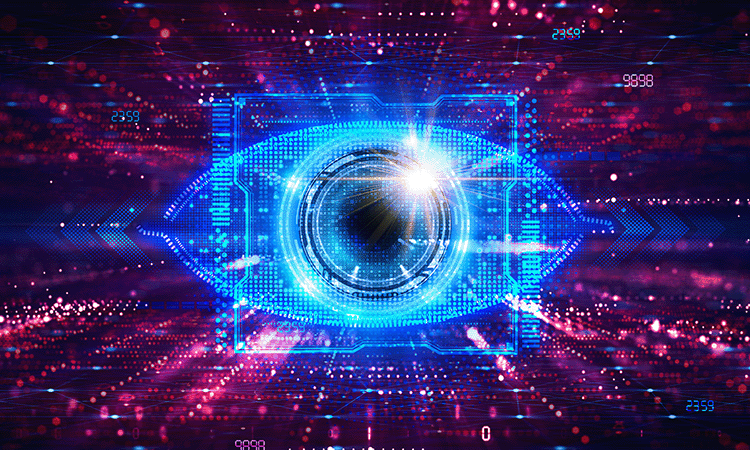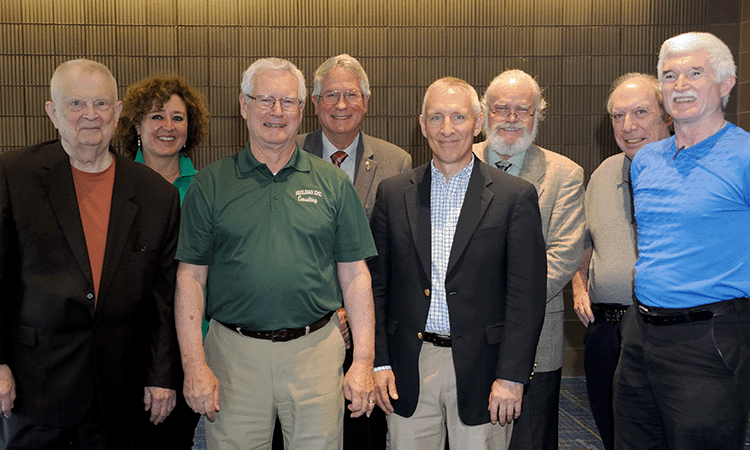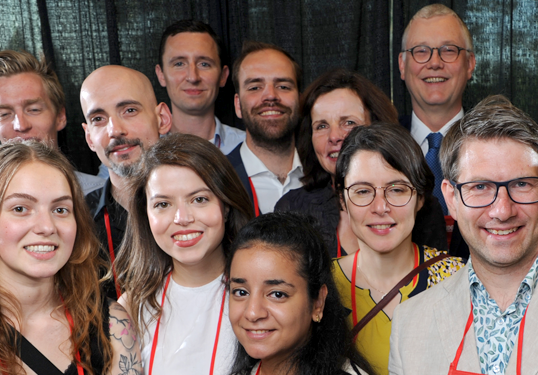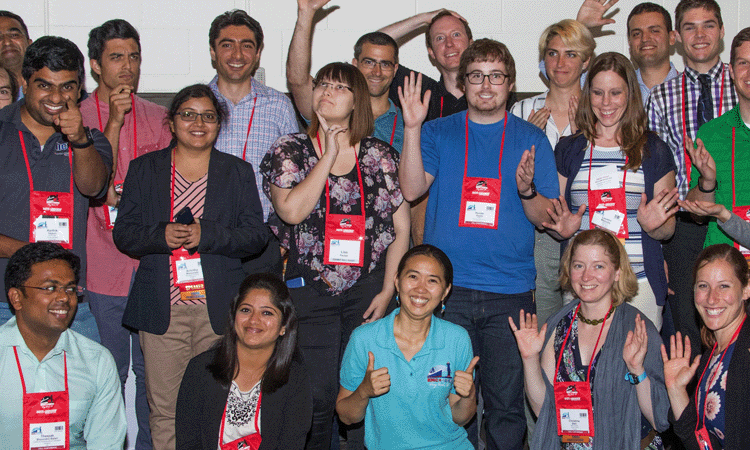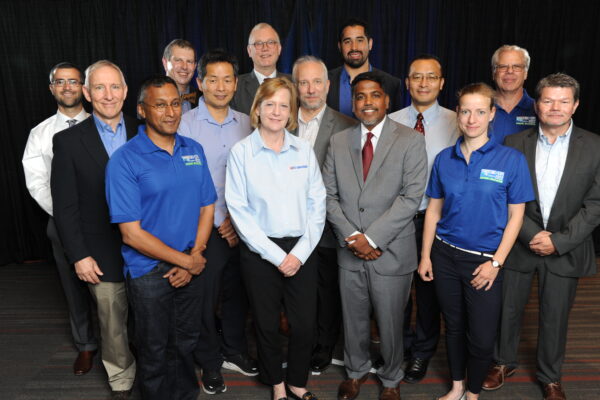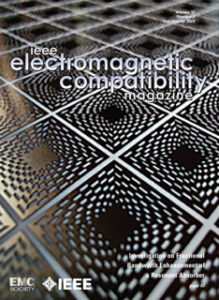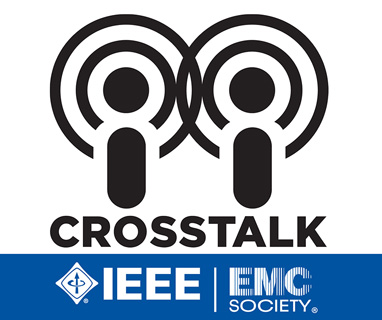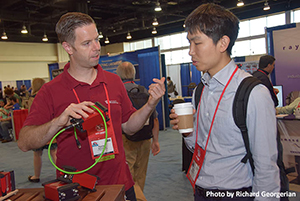
Distinguished Lecturer
Prof. Xing-Chang Wei
Distinguished Lecturer
Prof. Xing-Chang Wei to present “Digital Twin of EMI Source – Source Reconstruction Method”
on Wednesday, July 15, 10:00pm – 11:30pm (EDT). This Webinar will be on Thursday, July 16 at 10:00am in China Standard Time.

About Prof. Xing-Chang Wei
Term 2025-2026
Professor of College of Information, Science & Electronic Engineering, Zhejiang University, China
weixc@zju.edu.cn
Xing-Chang Wei received the Bachelor, Master, and PhD degrees in the electromagnetic field and microwave engineering from Xidian University, China, in 1995, 1998, and 2001 respectively. From 2001 to 2010, he was with the A*STAR Institute of High Performance Computing, Singapore, as a Research Fellow, Senior Research Engineer, and then Research Scientist. He was the visiting scholar of University of Illinois Urbana-Champaign in 2015. In 2010, he joined Zhejiang University, China, as a Full Professor.
His main research interests include near-field scanning, power integrity (PI), and electromagnetic interference (EMI) simulation and testing. He has more than 20 years research experiences of the electromagnetic compatibility (EMC) modeling and design of the high-speed printed circuit boards and packaging. He has authored one book, a book chapter, and about 200 papers published in IEEE Transactions and IEEE international conferences. He received the 2007 Singapore Institution of Engineers Prestigious Engineering Achievement Award for his contribution on the development of the reverberation chamber, and New Century Professional Award from China Ministry of Education in 2010.
He was an IEEE senior member since 2009, and Associate Editor of IEEE Transactions on Electromagnetic Compatibility. He contributed to EMCS/IEEE in several related international conferences, and received the 2019, 2021, 2022 and 2023 Distinguished Reviewer of the IEEE Transactions on Electromagnetic Compatibility. He was the Co-Chair of the Technical Program Committee of 2010 IEEE Electrical Design of Advanced Packaging and Systems Symposium (EDAPS), Technique Paper Co-Chair of 2018 and 2020 IEEE International Symposium on Electromagnetic Compatibility & Asia-Pacific Symposium on Electromagnetic Compatibility (APEMC), and Program Chair of 2012 APEMC. He severed as the TPC members of APEMC and IEEE Workshop on Signal and Power Integrity (SPI) since 2010 and 2015 respectively. He also organized more than 10 workshops/special sessions with EMC topics on APEMC, International Workshop on the Electromagnetic Compatibility of Integrated Circuits (EMC Compo), IEEE International Conference on Computational Electromagnetics (ICCEM), and other conferences since 2011.
His supervised students obtained Best Student Paper Award in 2019 EMC Compo and 2022 APEMC, Young Investigator Training Program in 2017 SPI, Second Student Paper Award in 2016 IEEE MTT-S International Wireless Symposium, Outstanding Paper Award in 15th International Conference on Electronics Packaging Technology (ICEPT), Best Symposium Paper in 2012 APEMC, and Engineering Degree Award issued by China National Graduated Education Steering Committee for Professional Engineering Degree.
Talk 1: Digital Twin of EMI Source – Source Reconstruction Method
Abstract: Different from the intended antenna modelling, most practical electromagnetic interference (EMI) sources are too complex to be fully modelled by using the 3D full-wave software, or even it is impossible to model them since their structures are unknown. Electromagnetic source reconstruction methods can provide a digital twin (equivalent electromagnetic source) to represent the real and complex EMI source. Both the real source and its equivalent source have the same radiated near-fields. For this purpose, the international standard IEC 62433-3 EMC IC modelling – Part 3 suggests the electromagnetic dipoles array as the equivalent source of the real EMI source in packages.
In this talk the equivalent dipole model is discussed. For the scanned near-field with phase, the least-square and regularization algorithms are used to obtain the equivalent dipoles. For the scanned phaseless near-field, the dynamic differential evolution (DDE) and iteration methods are used. The interesting thing is that the locations and types of those equivalent dipoles can reveal some important characteristics of the radiation source, which are helpful for EMI debugging. Beside these, they are also powerful tool for EMI modelling, such as:
- Derive the field phase from the scanned phaseless near-field;
- Prediction of the near-field coupling between the EMI source and the nearby victim circuit;
- Coupling analysis between devices inside a small shielding box;
- The reciprocity theorem is also used to predict the noise coupling, where both the source and victim structure are unknown;
- Predict the 3-meter far-field from the ICs and packages.
Talk 2: Can You Identify an Electromagnetic Photo? – EMC Analysis Enhanced by Artificial Intelligence
Abstract: In recent years, the artificial intelligence (AI) technology provides a powerful tool for solving electromagnetic problems, and there has been many successful stories for their applications on microwave device and antenna designs. The radiated near-field can be taken as an electromagnetic photo of an unknown EMI radiation source. This photo contains a lot of intrinsic information about the radiation source, such as its 3-meter radiation, coupling characteristics with nearby sensitive devices, as well as information about the position and polarization of the radiation source itself. But due to the inability of the human eye to see electromagnetic waves, our ability to identify electromagnetic photos is much lower than that of ordinary photos. AI has achieved significant results in facial recognition. This allows us to use AI to process electromagnetic photos and extract the useful information for EMI analysis from the features of the photos, such as 3-meter far-field and far-field radiation pattern.
This talk will start with a brief overview of AI and its applications in the EMC area. Then several different ways to enhance the near-field scanning by AI are presented. The Green’s function hybrid with artificial neural network (ANN) is developed for EMI estimation. The Green’s function of a dipole array with fixed source points is taken as input and the radiated field at any given observation point is taken as the output of ANN. We use the powerful mapping ability of ANN to replace the matrix-vector multiplication between Green’s function and dipole moments in the traditional dipole model, so that the ANN can be used to predict the near-field from unknown EMI source. Next, a deep convolutional neural network (DCNN) hybrid with the plane wave spectrum is proposed. By leveraging plane wave expansion, the spatial magnetic near-field data are converted into the spectrum domain, serving as the input for the DCNN model. DCNN’s output is the 3-meter electric far field. It enables the output of DCNN (3-meter far-field) insensitive to variations in the near-field scanning height. Finally, the physics-informed neural network (PINN) is introduced for near-field prediction, where the wave equation is integrated with the deep neural network. Therefore, the PINN is capable of efficiently interpolating and extrapolating the scanned near-field fields.
Talk 3: Practical EMI Measurements and EMI Probes Designs
Abstract: Electromagnetic interference (EMI) modeling and debugging require different suitable measurement methods. For high-speed circuits and integrated circuits, the IEC published a series of radiated emission and immunity testing methods.
In this talk, we will briefly introduce EMI measurement methods, including the TEM/GTEM, surface scan, 1/150 Ohm method, reverberation chamber, and anechoic chamber. Next, we will focus on the practice of designing electric and magnetic probes for EMI testing. What EMI testing requires is not a simple loop or monopole antenna as a suitable probe. In practical applications, one should consider probe’s sensitivity, effective center, spatial resolution, bandwidth and immunity to unwanted field components. A compact multi-components EzHxHy probe is proposed. In comparing with available single component probes, the EzHxHy probe can greatly save the engineer’s time. Furthermore, a wideband EzEx probe is proposed through the integration of a strip line magic-T. The magic-T can effectively streamline the complex data processing, enabling the proposed probe to offer a flexible instrument selection and achieve high measurement efficiency. After that, an Ex probe covering a wide frequency band (1.4–7.0 GHz) based on common mode absorbing is presented, where the self-resonance of a traditional Ex probe is eliminated by an absorbing-type balun. Meanwhile, other probes including the high spatial resolution Ez probe and high frequency (up to 70GHz) Hx probe will also be discussed.


